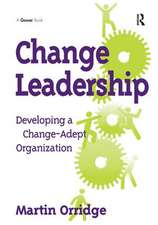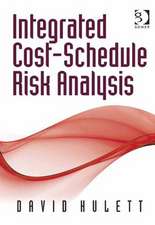Economics and Management in the Biopharmaceutical Industry in the USA: Evolution and Strategic Change: Routledge Studies in the Economics of Business and Industry
Autor Rachel Kimen Limba Engleză Hardback – 4 dec 2018
The author looks at the historical path of the biopharmaceutical industry, particularly in the United States. While the pharmaceutical industry’s main contributions to society are substantial, there are pressing challenges the industry must face, such as an increase in infectious disease outbreaks or the global aging population, which require new types of care, additionally, mental health care and prescription painkiller addiction are persistent issues with economic repercussions to both federal and local governments.
This book presents a holistic view of the biopharmaceutical industry, putting it in a historical context. It will best serve those who are eager to learn about this dynamic, fast-evolving industry and who would like to tackle current biopharmaceutical industry issues in the United States and be prepared for future industry challenges.
| Toate formatele și edițiile | Preț | Express |
|---|---|---|
| Paperback (1) | 256.48 lei 43-57 zile | |
| Taylor & Francis – 30 sep 2020 | 256.48 lei 43-57 zile | |
| Hardback (1) | 1000.27 lei 43-57 zile | |
| Taylor & Francis – 4 dec 2018 | 1000.27 lei 43-57 zile |
Din seria Routledge Studies in the Economics of Business and Industry
- 9%
 Preț: 868.23 lei
Preț: 868.23 lei -
 Preț: 153.11 lei
Preț: 153.11 lei -
 Preț: 312.86 lei
Preț: 312.86 lei -
 Preț: 326.14 lei
Preț: 326.14 lei - 9%
 Preț: 934.96 lei
Preț: 934.96 lei -
 Preț: 319.31 lei
Preț: 319.31 lei -
 Preț: 310.12 lei
Preț: 310.12 lei -
 Preț: 385.47 lei
Preț: 385.47 lei -
 Preț: 381.00 lei
Preț: 381.00 lei -
 Preț: 381.43 lei
Preț: 381.43 lei - 21%
 Preț: 256.48 lei
Preț: 256.48 lei -
 Preț: 357.98 lei
Preț: 357.98 lei -
 Preț: 366.08 lei
Preț: 366.08 lei -
 Preț: 185.56 lei
Preț: 185.56 lei -
 Preț: 397.16 lei
Preț: 397.16 lei -
 Preț: 380.63 lei
Preț: 380.63 lei - 9%
 Preț: 1006.49 lei
Preț: 1006.49 lei - 18%
 Preț: 944.74 lei
Preț: 944.74 lei - 18%
 Preț: 1001.39 lei
Preț: 1001.39 lei - 18%
 Preț: 1058.69 lei
Preț: 1058.69 lei
Preț: 1000.27 lei
Preț vechi: 1219.84 lei
-18% Nou
Puncte Express: 1500
Preț estimativ în valută:
191.46€ • 208.04$ • 160.93£
191.46€ • 208.04$ • 160.93£
Carte tipărită la comandă
Livrare economică 21 aprilie-05 mai
Preluare comenzi: 021 569.72.76
Specificații
ISBN-13: 9781138500273
ISBN-10: 1138500275
Pagini: 150
Dimensiuni: 156 x 234 x 10 mm
Greutate: 0.45 kg
Ediția:1
Editura: Taylor & Francis
Colecția Routledge
Seria Routledge Studies in the Economics of Business and Industry
Locul publicării:Oxford, United Kingdom
ISBN-10: 1138500275
Pagini: 150
Dimensiuni: 156 x 234 x 10 mm
Greutate: 0.45 kg
Ediția:1
Editura: Taylor & Francis
Colecția Routledge
Seria Routledge Studies in the Economics of Business and Industry
Locul publicării:Oxford, United Kingdom
Public țintă
Postgraduate and UndergraduateCuprins
Author’s Words: Overview of Strategic Management and Corporate Practice in the United States, Chapter 1. Introduction, Main Contributions of the Biopharmaceutical Industry, Current Public Health Issues in the United States, Chapter 2. In the Early Days of the Pharmaceutical Industry Worldwide, Aspirin in Germany and Penicillin from the United Kingdom to the United States, Aspirin Discovery in Bayer, Germany, Penicillin Discovery in the United Kingdom , Pfizer from 1849–1939: Fermentation Innovator, Pfizer in the 1940s: Large-Scale Penicillin Manufacturer, Pfizer in the 1950s: New Pharmaceutical Company with Terramycin®, Streptomycin Discovery by Waksman and Patented by Merck, Shift from Germany to the United Kingdom and United States: 1950 –1960s, Chapter 3. The Birth of Biotechnology , Slow Progress Despite Gene Splicing Technology Breakthrough, Breakthroughs from the Two Collaborators, Fear of the Unknown, The First Patents in the Recombinant DNA Area, Genentech Was Born, Chapter 4. Emergence of Biotechnology Firms in the 1970s–1990s, Threats of Young Competitors with New Knowledge, New Biotechnology Firms' Emergence in a Social Context: Response of Science Communities, Science Department at UCSF, UC Berkeley, and Stanford, New Biotechnology Firms' Emergence in the Legal Environment, Case Study 1: Genentech, The First Biotechnology Firm , Case Study 2: Amgen, The Second Biotechnology Company, Chapter 5. New Biotechnology Firms' Emergence from a Pharmaceutical Management Perspective, Case Study 3: Eli Lilly's Open Innovation, Early History of Eli Lilly, Case Study 4: Bristol-Myers Squibb (BMS) , Chapter 6. US Regulations on the Biopharmaceutical Industry and Their Impact, Drug Act Amendments of 1962: Scientific Evidence of Safety and Efficacy, Drug Price Competition and Patent Restoration Act of 1984 for Generic Drugs, The Orphan Drug Act of 1983 for Rare Diseases, Off-Label Prescribing Practice, The Prescription Drug User Fee Act (PDUFA) in 1992, Chapter 7. Law and Strategies: How Biopharma’s Strategies Adapted in Response to U.S. Law Changes, Healthcare Spending in the United States: The Economics of Biosimilars, Law Changes Since 2009, Implications of the Biologics Price Competition and Innovation Act (BPCIA) , Biologics: New Business Models, Dogfight 1: AbbVie’s Humira® versus Amgen’s Amjevita®, Dogfight 2: AbbVie’s Humira® versus Samsung Bioepis Co.’s Imraldi®, Dogfight 3: Johnson & Johnson’s Remicade® versus Samsung’s Renflexis®, The Future of Biosimilars, AbbVie: Best Strategist with Innovative Drugs, Generic Brands: Now Very Important Business Models, Chapter 8. Opportunistic Business Models in the Generic Drug Market, Mylan: The Path to Becoming a Giant Generic Drug Company, Unanticipatedly Strong Patents Defense of Bristol Myers Squibb, Turing Pharmaceutical: Too Opportunistic, Yet Legal Business Model, Chapter 9. Low Productivity of Drug Companies, Steep Rising Cost of Drugs as Strict Regulations Occurred, Low Productivity in Terms of New Drugs Approval, Chapter 10. Payers, Purchasers, and Promotions, Who Pays for Medicines in the United States, Direct-To-Consumer Advertising for Medicines, Food and Drug Administration, Case Study 5: The Path of Merck, The Unforgettable Mistake by Merck: Vioxx®, Chapter 11. Innovation Capabilities, Innovation from a Dynamic Capabilities Perspective, R&D Capabilities: Patents, Publications, and Alliances, Chapter 12. Immuno-cancer Therapy, Immuno-cancer Therapy: BMS versus Merck, Case Study 6: Gilead Sciences, Inc. , Case Study 7: Kite Pharma, Current Achievements in CAR-T Cell Therapy: Novartis versus. Gilead Sciences, New Business Models for CAR-T Cell Therapies, Chapter 13. The Biopharmaceutical Industry in the Future, High Expectations in Personalized Medicines, Emerging Markets, The Impact of Visionary and Strategic Leadership, New Business Models, Conclusion, Index
Notă biografică
Rachel Kim has obtained academic degrees that include a Doctorate in Business Administration and a Master's in Business Administration with a focus on strategic management from Alliant International University, San Diego, and a Bachelor of Science degree in Industrial Pharmaceutics from Ewha Womans University, South Korea. Dr Kim is currently a Researcher and Consultant on U.S. healthcare and has consulted for major pharmaceutical companies.
Descriere
This book presents an overview of the biopharmaceutical industry, putting it in a historical context. It provides readers with a detailed account of the achievements in drug discovery and development and current biopharmaceutical industry issues.


















